The simplest way to monitor your Google Ad campaigns in Perfex
Know which of your Google Ads campaigns attract leads, opportunities and customers by tracking Google Ad campaigns in Perfex.
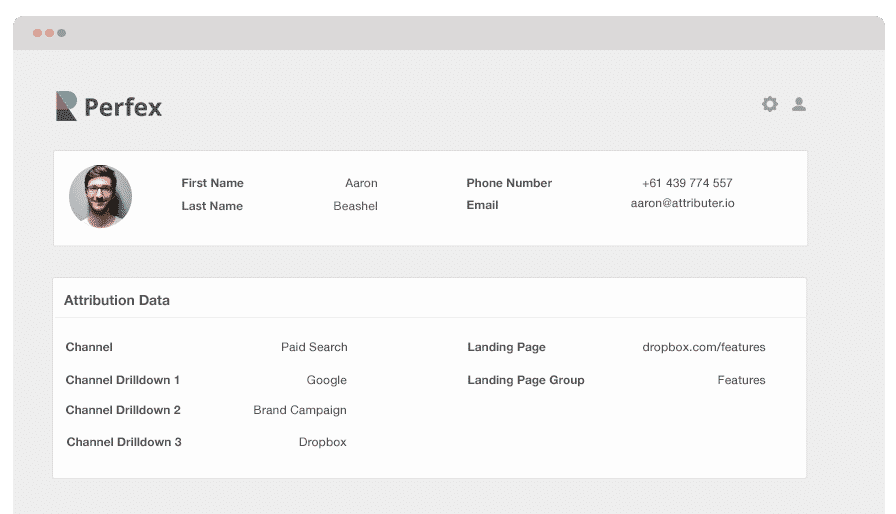
Do you understand which of your Google Ad campaigns is bringing in the chunk of your leads, opportunities, and customers? If not, how do you determine which campaigns are effective and which ones aren’t?
When you send Google Ads data into Perfex, you can view the campaigns where your leads, opportunities and customers have come from. You can also run reports in Perfex that let you know which campaigns generate a positive ROI and which don’t.
In this post, you will learn how to use Attributer to pass Google Ads data into Perfex with every lead and their respective information. Ultimately, you can use it to track your Google Ads campaigns’ performances.
What is Attributer?
Attributer can be described as a piece of code you place on your website in its barest form. When a user visits your site, Attributer scans some technical information to identify where that visitor came from.
Attributer then groups each visitor into a series of channels like paid search, paid social, organic search, etc. This channel information is stored as a cookie in the visitor’s browser. And whenever that visitor completes a form on your site, Attributer passes the channel information into Perfex alongside the lead’s other information that they provided in your form.
Every time a new lead comes into Perfex from one of your Google Ad campaigns, it may look something like this:
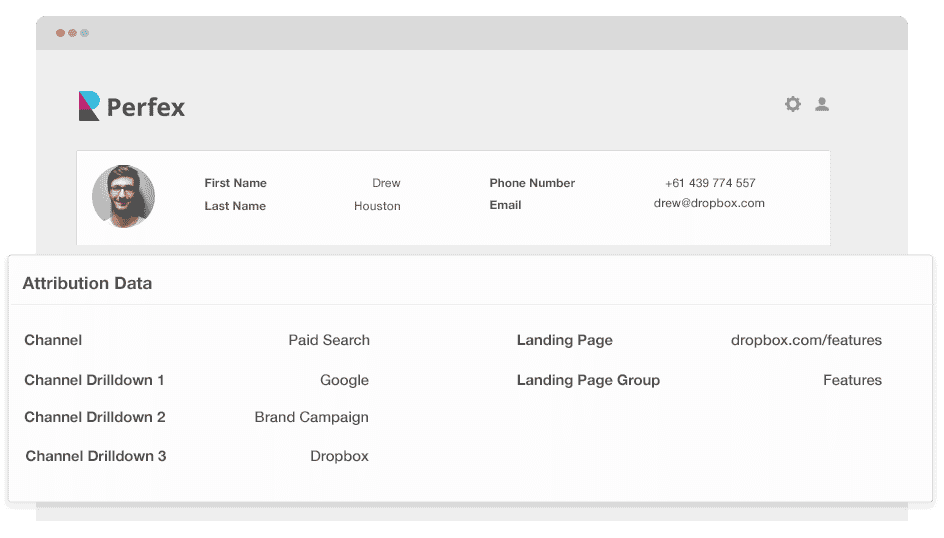
As the image above shows, Attributer has sent the data that they came from ‘paid search’ along with the campaign name, ad group name, visitor’s landing page, etc.
4 simple steps to track your Google Ads campaigns in Perfex
Attributer makes it easy to track Google Ads campaigns in Perfex. Here’s how it works:
1. Add UTM parameters to your Google Ads campaigns

To track your Google Ad campaigns in Perfex, you must first add UTM parameters to each of your ads.
UTM parameters are extra bits of text that get added at the end of the URLs you send to people from your campaigns.
For example, if the page you are sending someone is attributer.io/integrations/salesforce, then your final URL with UTM parameters may look something like this:
https:// attributer.io/integrations/salesforce?utm_medium=paidsearch&
Even though you can build the UTM parameter any which way you want, the best practices for Google Ads are the following:
- UTM Medium = Paid search
- UTM Source = Google
- UTM Campaign = The name of your Google Ads campaign
- UTM Term = The name of the ad group the ad belongs to
- UTM Content = The specific ad
Putting UTM parameters in your URLs is simple, and free online tools are offered to help you build them.
2. Add hidden fields to your forms
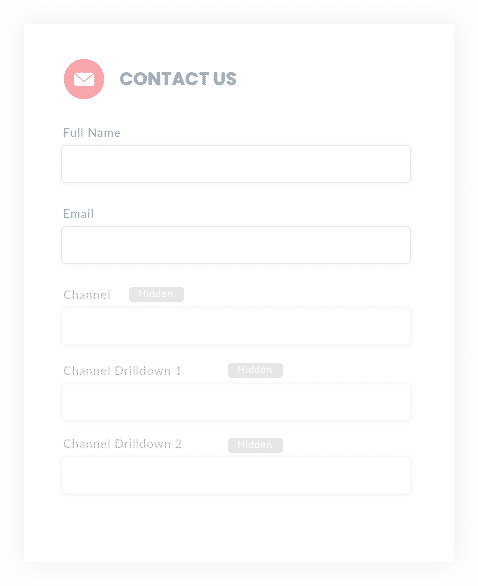
The next step is to add several hidden fields to your forms. The end users won’t see these fields but will do their work behind the scenes.
The following are the hidden fields you need to add to your forms:
- Channel
- Channel Drilldown 1
- Channel Drilldown 2
- Channel Drilldown 3
- Landing Page
- Landing Page Group
Almost all form-building tools make it easy to add hidden fields. Some of these tools are Gravity Forms, Wix Forms, and Jotform. Simple drag and drop a ‘hidden’ field type into your form. Instructions on how to do this for various form builders can be seen here.
3. Attributer writes Google Ads data into the hidden fields

After setting up the hidden fields, Attributer oversees the origins of your visitors. Whenever they submit a form on your website, Attributer will populate the hidden fields with the values you specified in your UTM parameters.
For example, if I was a Dropbox marketer and an individual arrived on my site from one of my brand campaigns in paid search, Attributer would populate the hidden fields like so:
- Channel = Paid search
- Channel Drilldown 1 = Google
- Channel Drildown 2 = Brand campaign
- Channel Drilldown 3 = Free account ad
In addition to the values from the UTM parameters, Attributer would also capture the visitor’s first landing page (e.g., dropbox.com/features/cloud-storage) and the first landing page group (e.g., features).
4. Google Ads data is sent to Perfex

Last of all, every one of the Google Ads data derived from the UTM parameters, the landing page data, the lead’s name, email, and other information are passed into Perfex every time a visitor completes a form on your site.
When the data is inside Perfex, you can run reports on them using Perfex’s native reporting tools. If you have BI tools like Tableau or Looker, you can use them to build more advanced reports.
Example reports you can create once Google Ads data and Perfex are connected
You can run similar reports below if you’ve followed the 4 steps above and used Attributer to capture Google Ads data in Perfex.
1. Leads by campaign, ad group or ad
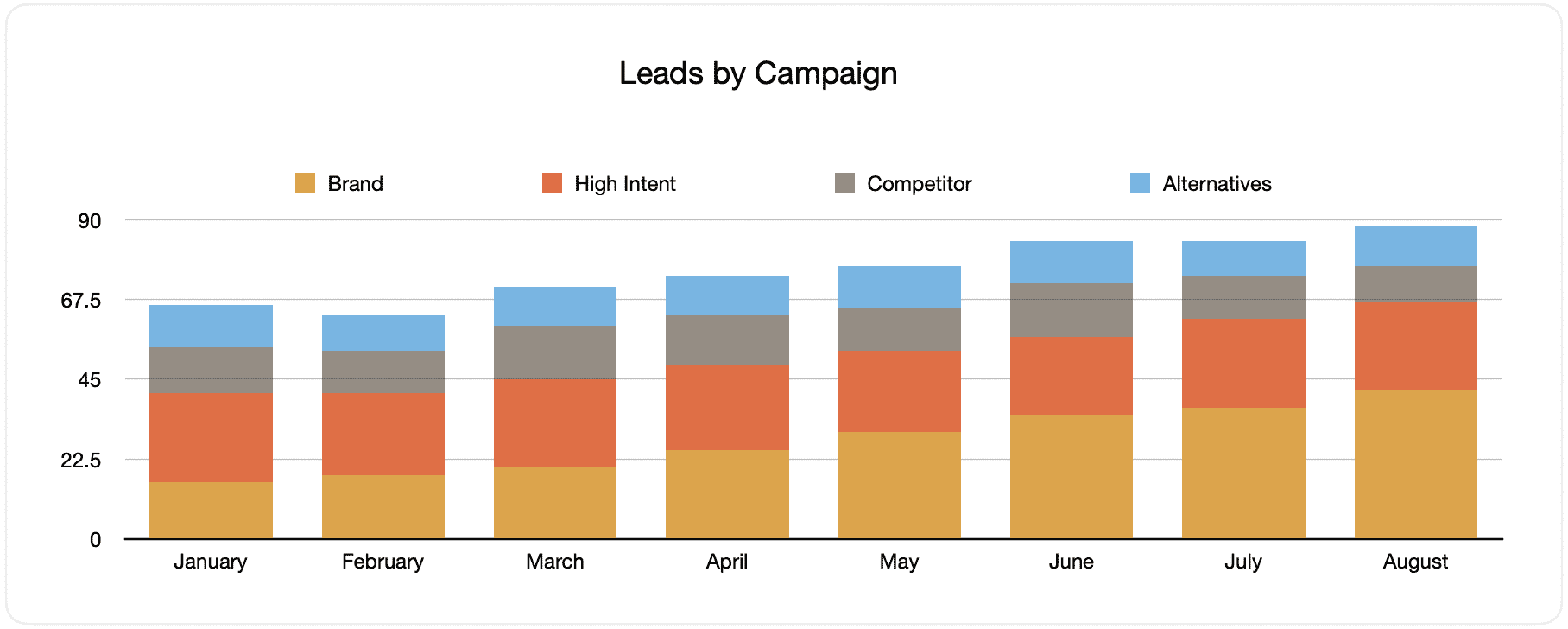
This report provides information on the number of monthly leads generated from your Google Ads, sorted by the Google Ads campaign where your visitors came from.
When studied over time, you will see the breakdown of leads by campaign each month and how it changes over time. Ultimately, you can also see the impact of the changes and optimizations you applied to your Google Ads.
2. Customers by campaign, ad group or ad

The information shows the number of new customers made each month from your Google Ads, grouped by the channel from which they arrive at the website.
Comparing this graph to the leads graph may reveal some interesting things, such as discovering that there are campaigns that bring in leads but never actually turn into customers. When this happens, it can signify that it’s no longer worth investing in those campaigns.
3. Revenue by campaign, ad group or ad
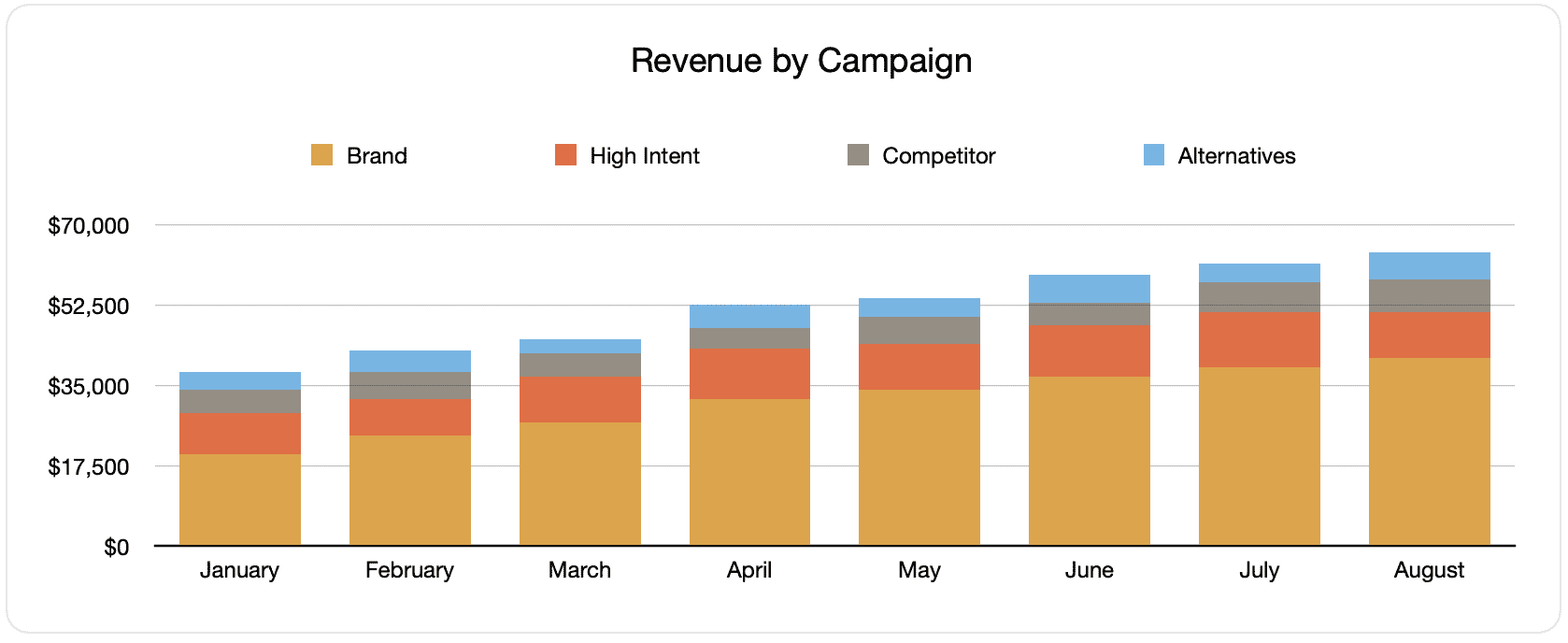
This report exhibits the revenue generated each month, categorized by the channel the customer originated from.
This report can be valuable for measuring the overall ROI of your marketing efforts. For instance, the above graph shows that $236,156 in new revenue was made from paid social ads in March. If the customer spent less than this on the ads, it’s positive ROI and worth continuing.
Why using Attributer is better than capturing raw UTM parameters
Sure, there are other ways to capture UTM parameters and track your Google Ads in Perfex, but using Attributer has additional benefits.
Read below to know more.
1. Captures all traffic
Attributer is an excellent system for capturing UTM parameters and sending them into Perfex so you can monitor your Google Ads campaigns.
Attributer also sends information on visitors from other channels such as organic social, organic social, direct, etc.
With this, you can create reports in your CRM to identify where ALL your leads and customers have come from regardless of the channel they went through.
This can be useful when your SEO efforts are the ones generating most of your leads and customers instead of your Google Ads campaigns. Having this information will let you invest wisely and accordingly.
2. Remembers the data
It's a common requirement among UTM capturing tools and methods to have the UTM parameter present on the page where the form is submitted. This can be a problem when visitors submit a form on a page different from the one they initially landed on your site.
For instance, someone clicks on one of your Google Ads and is led to a landing page for that campaign. Once they've decided they want your product or service, they click on the 'Get A Quote' button and are then taken to a different page to complete your request form. This means that the page they complete the form on isn't the exact page they first landed on. Hence, the UTM parameters are lost.
Attributer operates differently as it stores the UTM parameters in a cookie in the user's browser. So no matter what page the user completes a form on, Attributer will always send the UTM parameters to your CRM.
This means that regardless of the user's navigation activity on your site before submitting the form, you'll always be able to track them back to your Google Ads.
3. Provides cleaner data
One of the common issues encountered while using other UTM capturing tools is that your data gets messy, which makes building accurate reports challenging.
For instance, some of your Google Ads campaigns are tagged with UTM_Source= Google.com (capital T), others with UTM_Source= google (lowercase, no domain), and others with UTM_Source= adwords.
If you were to send this raw UTM data into Perfex and try to see the number of leads from your Google Ads campaign, you’d receive three different sources that you need to stitch together manually.
You don’t have to deal with this with Attributer. Why? Because it can recognize inconsistencies such as the possibility of capitalization and would ultimately appoint the leads to the paid search channel regardless.
4. Records landing page data
Isn’t it nice to know how many leads and customers your blog generates? As well as those in-depth content pieces you worked on for a long time?
More than the channel data, Attributer also captures the landing page (i.e., attributer.io/blog/capture-utm-parameters) and the landing page category (i.e., /blog).
With this data available to you, you will be able to monitor how sections on your site are performing regarding leads, customers and revenue generation.
Moreover, since both the landing page and landing page group data are captured, you can view how your blog section is performing as a whole and zoom in on individual blog posts’ performance.
Wrap up
If you want to monitor your Google Ads performance in Perfex, then Attributer is an excellent tool.
It will capture UTM parameters behind your Google Ad campaigns and send them to Perfex, which lets you build reports on the campaigns where your leads and customers originated from.
What’s more, it will also provide data from other channels so you can monitor the source of ALL your leads, not just the ones from Google Ads. Ultimately, you will know where to invest in scaling your business further.
What’s excellent is that Attributer is free to get started! So start your free trial today.
Get Started For Free
Start your 14-day free trial of Attributer today!

About the Author
Aaron Beashel is the founder of Attributer and has over 15 years of experience in marketing & analytics. He is a recognized expert in the subject and has written articles for leading websites such as Hubspot, Zapier, Search Engine Journal, Buffer, Unbounce & more. Learn more about Aaron here.
